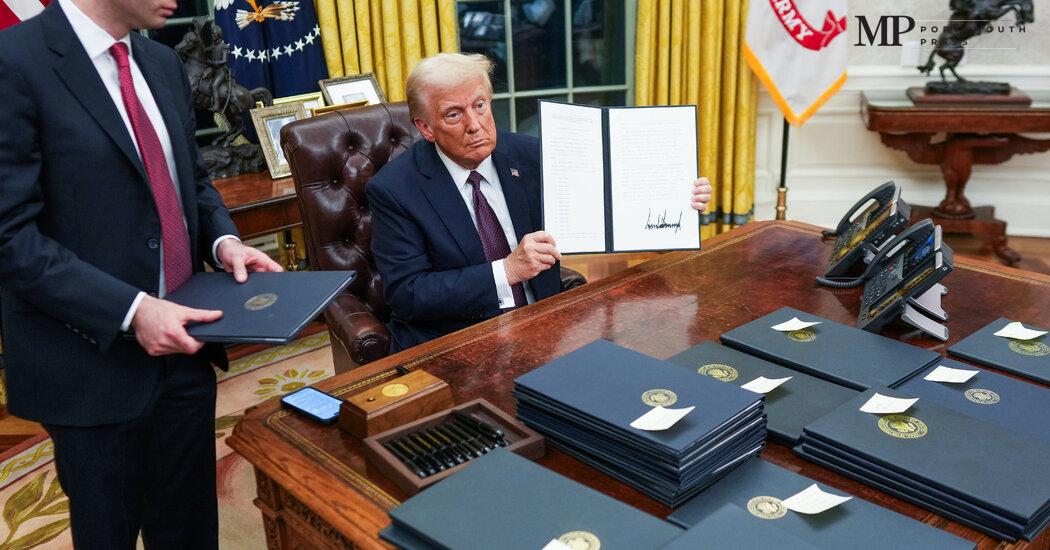As the new year unfolds, President Donald Trump is making headlines with an ambitious plan to sign nearly 100 executive orders on Inauguration Day. This bold move marks his return to the Oval Office and sets the stage for significant policy shifts across multiple areas, including immigration, energy production, and government reforms. Let’s dive into the details of what these orders could mean for the country.
A Flurry of Executive Actions
On his first day back in office, President Trump wasted no time in addressing key issues that he believes are crucial for America. With a signed executive order, Trump declared a national emergency at the U.S.-Mexico border. He aims to reinstate tough measures on immigration, including the deployment of troops to support agents who deal with asylum seekers and migrants at the border. Notably, he has plans to bring back a policy that requires asylum seekers to wait in Mexico while their applications are processed.
Environmental Changes: The End of the Paris Agreement
In a move that has sparked debate, Trump has decided to withdraw the United States from the Paris Climate Agreement once again. This decision is part of his broader strategy to boost American energy production, which he believes will create jobs and secure energy independence. One of his executive orders allows for increased energy exploration in places like Alaska, aimed at tapping into domestic resources.
Policies Affecting Our Communities
Trump’s actions are expected to have significant implications for various communities. For instance, he has rolled back protections for transgender individuals, a move that has many advocacy groups concerned. Additionally, he is ending programs focused on diversity, equity, and inclusion in federal agencies, which he feels are unnecessary at this time.
Federal Workforce Changes
Another key aspect of Trump’s executive orders includes a federal hiring freeze and a mandate for federal workers to return to a traditional five-day workweek. He also announced the creation of the Department of Government Efficiency (DOGE), with a focus on improving government operations while implementing stricter job protections through a policy called “Schedule F.”
Pardons to 1,500 Individuals
Perhaps one of the most talked-about elements of Trump’s executive actions is his decision to issue pardons for approximately 1,500 individuals charged with crimes related to the January 6 Capitol riot. By doing so, Trump reinforces a narrative that the people involved in the event are victims of an overreaching justice system rather than criminals. This pardon effectively highlights the deep political divides regarding that day’s events and their continuing implications for American society.
Name Changes Noted
In a nod to his past decisions, Trump has also ordered the renaming of certain geographical locations, including changing Denali back to Mount McKinley and renaming the Gulf of Mexico to the Gulf of America. Each of these name changes reflects Trump’s desire to emphasize American heritage and assert dominance over historical narratives.
Flags at Full Staff on Inauguration Day
To commemorate his return, Trump has signed an order for all flags to be flown at full staff on Inauguration Day, symbolizing a fresh start and a new chapter in his presidency. This gesture serves to unite supporters while also indicating a strong resolve to lead the country through this next phase.
Conclusion
With nearly 100 executive orders anticipated to be signed, President Trump is strategically setting the tone for his second term. The immediate focus on immigration, environmental policy, social issues, and government reformation could significantly shape the American landscape in the coming years. As the country awaits more details of these orders, one thing is certain: Trump’s administration is gearing up for a controversial and transformative ride ahead.









